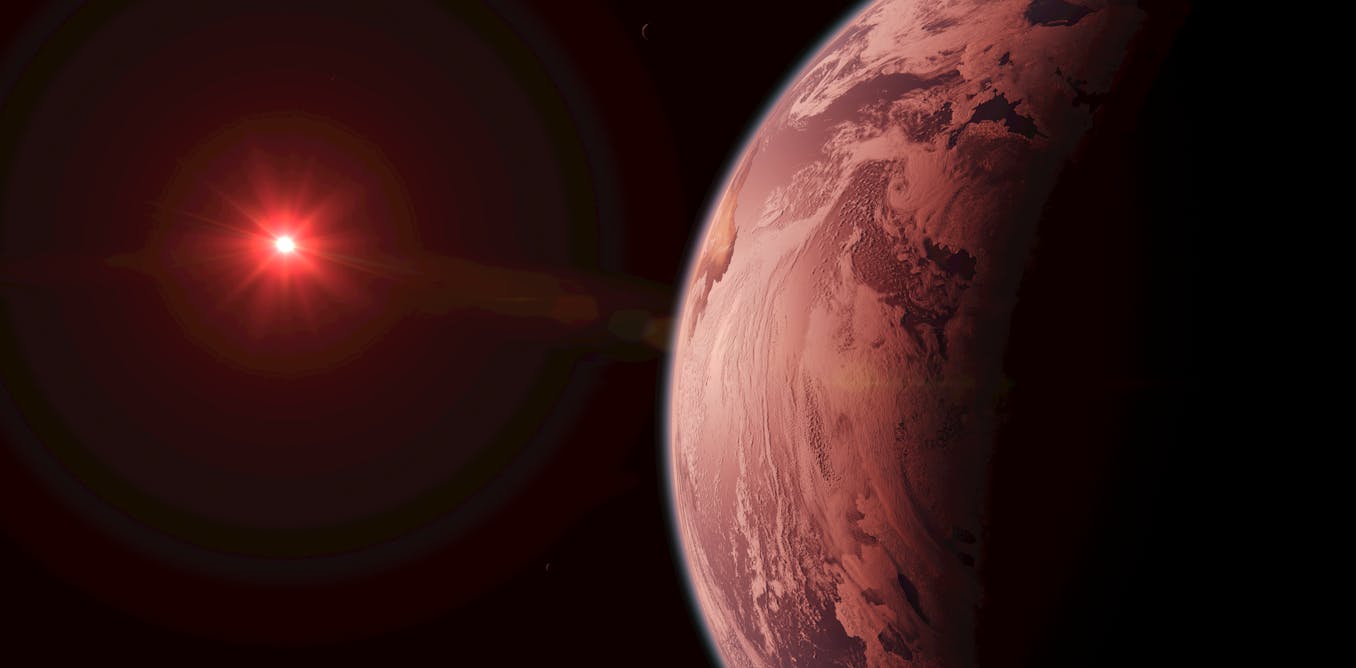Now Reading: Indicators of alien life may have been found – astrophysicist explains what the new research means
-
01
Indicators of alien life may have been found – astrophysicist explains what the new research means
Indicators of alien life may have been found – astrophysicist explains what the new research means

When thinking about extraterrestrial life, most people envision humanoid beings living on other planets, as depicted in popular sci-fi books and TV shows. However, astronomers typically search for signs of extraterrestrial life in the form of emissions from bacteria or other tiny organisms.
According to a recent research paper published in the Astrophysical Journal, scientists in Cambridge have reportedly detected such emissions with a 99.7% certainty from a planet known as K2-18b, located 124 light years away. By utilizing NASA’s James Webb Space Telescope to analyze the planet’s atmosphere’s chemical composition, the researchers have identified promising evidence suggesting that K2-18b could potentially support life.
While this discovery is considered a significant breakthrough, it does not definitively confirm the existence of alien life. The scientific community remains cautious about accepting the paper as proof of extraterrestrial life due to the challenges associated with detecting such life forms.
The search for exoplanets has faced waning public interest, primarily due to the vast number of planets being discovered. Detecting exoplanets relies on various methods like radial velocity, where the planet’s effect on its neighboring star is observed rather than directly observing the planet itself. Currently, there are around 7,500 known planets, with only a small fraction (approximately 0.5%) observed directly.
Analyzing the atmosphere of an exoplanet is an even more complex task, often requiring spectroscopy to study the light passing through the planet’s atmosphere. Scientists can deduce the composition of an exoplanet’s atmosphere by examining how the light emitted by the star interacts with the planet’s atmosphere.
The recent study’s findings, which indicate the presence of dimethyl sulphide and dimethyl disulphide, have sparked discussions among scientists. While some view these molecules as potential biomarkers for life, others caution that these compounds can also be found in non-biological settings. The study authors argue that the levels of these molecules detected on K2-18b are inconsistent with non-biological sources, although further research is needed to confirm these findings.
Although the Cambridge study represents a significant advancement in understanding exoplanets, it does not conclusively prove the existence of extraterrestrial life. Nevertheless, it serves as a crucial step in exploring the possibilities of life beyond Earth and encourages continued scientific exploration in this field.






